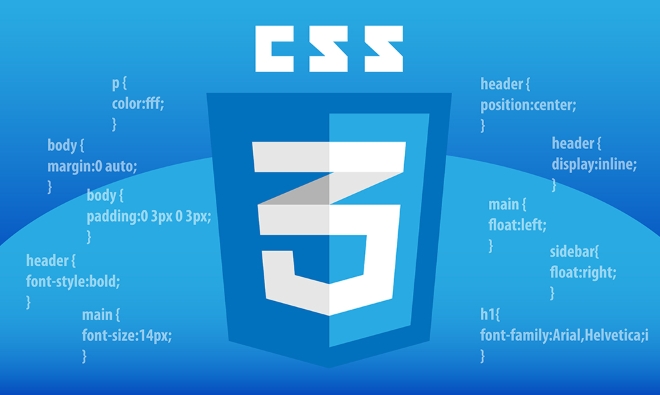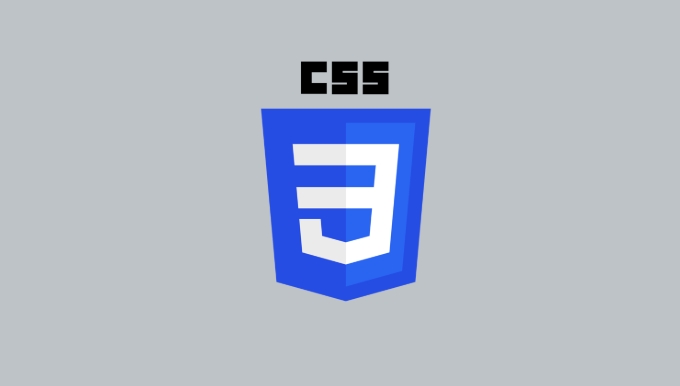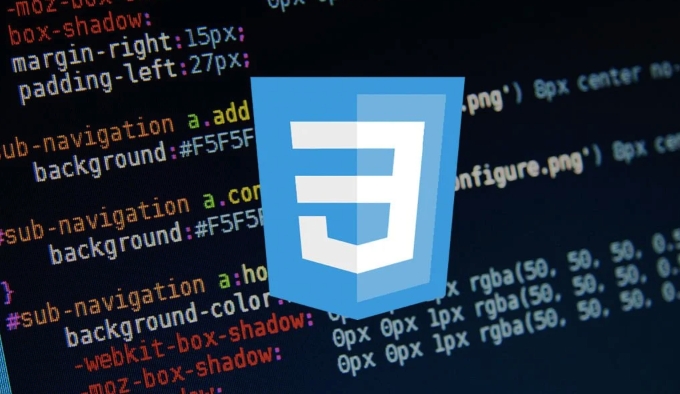Flexbox is a one-dimensional model for web layout, especially suitable for responsive design. Create elastic containers by setting display: flex; to easily control the arrangement, alignment, and scaling of child elements. The arrangement direction is controlled by flex-direction and supports row, row-reverse, column and column-reverse. Center alignment can be achieved through justify-content (spindle) and align-items (crossing axis), and common values ??include center, flex-start, flex-end, space-between, and space-around. Project scaling relies on flex-grow, flex-shrink, and flex-basis properties, where flex-grow allocates remaining space proportionally. After mastering these core attributes, you can complete modern web page layout more efficiently.

Flexbox is a powerful tool for front-end layout, especially suitable for responsive design. It simplifies how elements are arranged in web pages without relying on complex floating or positioning. If you are just starting to learn CSS layout, Flexbox should be the first tool to master.

What is Flexbox?
Flexbox is a one-dimensional layout model that is mainly used to arrange, align and allocate space for child elements in containers. You can understand it as a "smart box" where the items can be automatically resized, ordered and aligned as needed.

Using Flexbox is very simple: just set display: flex; for a container, and it becomes a Flex container, and the direct child elements inside become a Flex project.
.container {
display: flex;
}How to control the arrangement direction of the project?
Flexbox is arranged from left to right by default, but you can change this direction through flex-direction :

-
row(default): from left to right -
row-reverse: from right to left -
column: from top to bottom -
column-reverse: from bottom to top
For example, if you want to make a vertical navigation bar, you can write it like this:
.nav {
display: flex;
flex-direction: column;
}At this time, the menu items will be arranged vertically instead of horizontally.
How to center the elements?
Many people are troubled by alignment problems at the beginning. Flexbox provides two properties to handle alignment on the spindle and cross axis:
-
justify-content: Controls the alignment on the spindle -
align-items: Controls the alignment on the cross axis
Commonly used values ??include:
-
center -
flex-start -
flex-end -
space-between -
space-around
For example, if you want to center a button horizontally and vertically in a container, you can set it like this:
.box {
display: flex;
justify-content: center;
align-items: center;
}In this way, no matter how big the button is, it will be displayed in the center in the parent container.
How to automatically scale and retract Flex projects?
Sometimes you want some projects to automatically resize according to the available space, and then you need to use the three attributes of flex-grow , flex-shrink and flex-basis .
The most commonly used is flex-grow , which has a value of a number indicating how much remaining space the item will occupy. For example:
.item1 {
flex-grow: 1;
}
.item2 {
flex-grow: 2;
} If there are two items whose flex-grow is 1 and 2, the remaining space will be allocated to them in a 1:2 ratio.
Basically that's it. Flexbox seems simple, but it is very powerful when combined. Many modern website layouts are built on Flexbox. After mastering these key attributes, you will find that the layout has become much easier.
The above is the detailed content of CSS Flexbox tutorial for layout design. For more information, please follow other related articles on the PHP Chinese website!

Hot AI Tools

Undress AI Tool
Undress images for free

Undresser.AI Undress
AI-powered app for creating realistic nude photos

AI Clothes Remover
Online AI tool for removing clothes from photos.

Clothoff.io
AI clothes remover

Video Face Swap
Swap faces in any video effortlessly with our completely free AI face swap tool!

Hot Article

Hot Tools

Notepad++7.3.1
Easy-to-use and free code editor

SublimeText3 Chinese version
Chinese version, very easy to use

Zend Studio 13.0.1
Powerful PHP integrated development environment

Dreamweaver CS6
Visual web development tools

SublimeText3 Mac version
God-level code editing software (SublimeText3)

Hot Topics
 What is 'render-blocking CSS'?
Jun 24, 2025 am 12:42 AM
What is 'render-blocking CSS'?
Jun 24, 2025 am 12:42 AM
CSS blocks page rendering because browsers view inline and external CSS as key resources by default, especially with imported stylesheets, header large amounts of inline CSS, and unoptimized media query styles. 1. Extract critical CSS and embed it into HTML; 2. Delay loading non-critical CSS through JavaScript; 3. Use media attributes to optimize loading such as print styles; 4. Compress and merge CSS to reduce requests. It is recommended to use tools to extract key CSS, combine rel="preload" asynchronous loading, and use media delayed loading reasonably to avoid excessive splitting and complex script control.
 External vs. Internal CSS: What's the Best Approach?
Jun 20, 2025 am 12:45 AM
External vs. Internal CSS: What's the Best Approach?
Jun 20, 2025 am 12:45 AM
ThebestapproachforCSSdependsontheproject'sspecificneeds.Forlargerprojects,externalCSSisbetterduetomaintainabilityandreusability;forsmallerprojectsorsingle-pageapplications,internalCSSmightbemoresuitable.It'scrucialtobalanceprojectsize,performanceneed
 Does my CSS must be on lower case?
Jun 19, 2025 am 12:29 AM
Does my CSS must be on lower case?
Jun 19, 2025 am 12:29 AM
No,CSSdoesnothavetobeinlowercase.However,usinglowercaseisrecommendedfor:1)Consistencyandreadability,2)Avoidingerrorsinrelatedtechnologies,3)Potentialperformancebenefits,and4)Improvedcollaborationwithinteams.
 CSS Case Sensitivity: Understanding What Matters
Jun 20, 2025 am 12:09 AM
CSS Case Sensitivity: Understanding What Matters
Jun 20, 2025 am 12:09 AM
CSSismostlycase-insensitive,butURLsandfontfamilynamesarecase-sensitive.1)Propertiesandvalueslikecolor:red;arenotcase-sensitive.2)URLsmustmatchtheserver'scase,e.g.,/images/Logo.png.3)Fontfamilynameslike'OpenSans'mustbeexact.
 What is Autoprefixer and how does it work?
Jul 02, 2025 am 01:15 AM
What is Autoprefixer and how does it work?
Jul 02, 2025 am 01:15 AM
Autoprefixer is a tool that automatically adds vendor prefixes to CSS attributes based on the target browser scope. 1. It solves the problem of manually maintaining prefixes with errors; 2. Work through the PostCSS plug-in form, parse CSS, analyze attributes that need to be prefixed, and generate code according to configuration; 3. The usage steps include installing plug-ins, setting browserslist, and enabling them in the build process; 4. Notes include not manually adding prefixes, keeping configuration updates, prefixes not all attributes, and it is recommended to use them with the preprocessor.
 What are CSS counters?
Jun 19, 2025 am 12:34 AM
What are CSS counters?
Jun 19, 2025 am 12:34 AM
CSScounterscanautomaticallynumbersectionsandlists.1)Usecounter-resettoinitialize,counter-incrementtoincrease,andcounter()orcounters()todisplayvalues.2)CombinewithJavaScriptfordynamiccontenttoensureaccurateupdates.
 CSS: When Does Case Matter (and When Doesn't)?
Jun 19, 2025 am 12:27 AM
CSS: When Does Case Matter (and When Doesn't)?
Jun 19, 2025 am 12:27 AM
In CSS, selector and attribute names are case-sensitive, while values, named colors, URLs, and custom attributes are case-sensitive. 1. The selector and attribute names are case-insensitive, such as background-color and background-Color are the same. 2. The hexadecimal color in the value is case-sensitive, but the named color is case-sensitive, such as red and Red is invalid. 3. URLs are case sensitive and may cause file loading problems. 4. Custom properties (variables) are case sensitive, and you need to pay attention to the consistency of case when using them.
 Case Sensitivity in CSS: Selectors, Properties, and Values Explained
Jun 19, 2025 am 12:38 AM
Case Sensitivity in CSS: Selectors, Properties, and Values Explained
Jun 19, 2025 am 12:38 AM
CSSselectorsandpropertynamesarecase-insensitive,whilevaluescanbecase-sensitivedependingoncontext.1)Selectorslike'div'and'DIV'areequivalent.2)Propertiessuchas'background-color'and'BACKGROUND-COLOR'aretreatedthesame.3)Valueslikecolornamesarecase-insens






